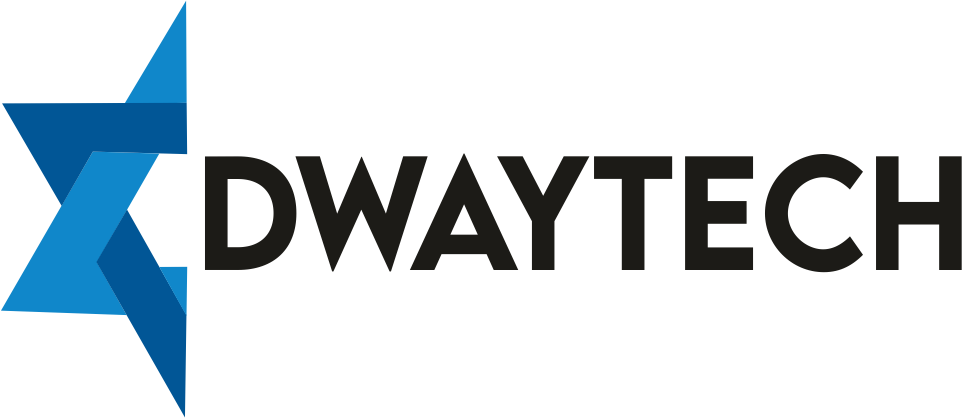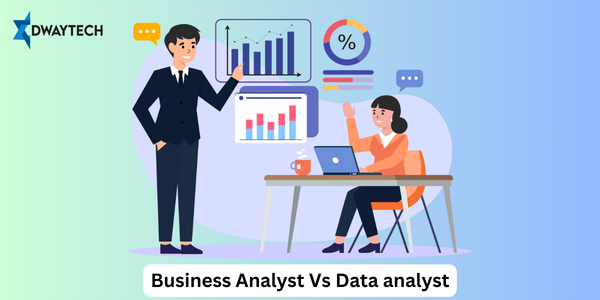In today’s data-driven world, Business Analysts (BAs) and Data Analysts (DAs) are crucial in helping organizations make informed decisions. While these roles may seem similar at first glance, they serve distinct functions and require different skill sets. Understanding the differences between these two positions is important for anyone considering a career in either field or for businesses looking to hire the right talent for specific needs.
In this article, we’ll dive into the similarities and differences between Business Analysts and Data Analysts, exploring their roles, responsibilities, skills, and tools they use. By the end of this, you’ll have a clearer picture of which role fits your needs or career aspirations.
What is a Business Analyst?
A Business Analyst (BA) is a professional who acts as a bridge between business stakeholders and IT teams. Their primary role is to identify business needs, analyze processes, and create solutions to improve efficiency and effectiveness. BAs are involved in understanding business problems and opportunities and then recommending changes or improvements to achieve desired outcomes.
Key Responsibilities of a Business Analyst:
- Understanding Business Needs: BAs work closely with stakeholders to gather and document requirements, ensuring that the final solution aligns with business goals.
- Process Analysis: They analyze current processes to identify inefficiencies and areas for improvement.
- Solution Design: Based on their analysis, BAs design and propose solutions, which could involve changes to processes, systems, or policies.
- Requirement Documentation: BAs create detailed documentation of requirements and specifications that developers and project teams use to build the solution.
- Stakeholder Communication: They facilitate communication between different departments, ensuring everyone is aligned with the project goals.
What is a Data Analyst?
A Data Analyst (DA) focuses on interpreting data to help businesses make informed decisions. Their role involves collecting, processing, and analyzing data to uncover trends, patterns, and insights that can drive strategic decisions. Unlike BAs, who focus on understanding business processes and needs, DAs dive deep into data to extract actionable insights.
Key Responsibilities of a Data Analyst:
- Data Collection: DAs gather data from various sources, including databases, spreadsheets, and external datasets.
- Data Cleaning: They ensure data quality by cleaning and preprocessing data, and removing errors or inconsistencies.
- Data Analysis: Using statistical tools and techniques, DAs analyze data to identify trends, correlations, and patterns.
- Reporting: They create visualizations, dashboards, and reports to present their findings in a clear and actionable way.
- Supporting Decision-Making: DAs provide insights that help stakeholders make data-driven decisions, often working closely with BAs to align findings with business needs.
Business Analyst vs. Data Analyst: A Comparison
While both roles are integral to a business’s success, they differ in focus, skill sets, and tools used. Here’s a comparison to show you the differences:
| Aspect | Business Analyst (BA) | Data Analyst (DA) |
|---|---|---|
| Primary Focus | Business processes, requirements gathering, and solutions | Data collection, cleaning, analysis, and reporting |
| Key Skills | Communication, problem-solving, process modeling | Statistical analysis, data visualization, SQL, programming |
| Tools Used | UML, BPMN, Microsoft Visio, JIRA | Excel, SQL, Python, R, Tableau, Power BI |
| Typical Deliverables | Requirement documents, process models, business cases | Reports, dashboards, data visualizations, insights |
| Stakeholder Interaction | High, often with non-technical teams | Moderate, usually with technical teams and data users |
| Outcome | Solutions to business problems | Data-driven insights for decision-making |
| Education Background | Business, management, or IT | Statistics, mathematics, computer science, or related fields |
| Work Environment | Collaborates with business and IT teams | Often part of analytics or data science teams |
Similarities Between Business Analysts and Data Analysts
Despite their differences, BAs and DAs share some common ground:
- Problem-Solving: Both roles require strong problem-solving skills, as they need to identify issues and propose effective solutions.
- Analytical Thinking: Both BAs and DAs must be able to think critically and analyze information to support business goals.
- Collaboration: Both roles often require collaboration with multiple stakeholders across different departments.
- Attention to Detail: Accuracy is crucial in both positions, whether it’s in documenting requirements or analyzing data.
Choosing the Right Role: Business Analyst or Data Analyst?
If you’re trying to decide between a career as a Business Analyst or a Data Analyst, consider the following:
- Interest in Business Processes vs. Data: If you enjoy understanding and improving business processes, a BA role might be more suitable. If you are passionate about working with data and finding insights, a DA role would be a better fit.
- Skill Set: Evaluate your strengths. Are you more comfortable with communication and project management (BA) or with numbers and statistical analysis (DA)?
- Career Goals: Consider where you want your career to go. BAs often move into roles such as Project Managers or Product Owners, while DAs might transition into Data Science or Data Engineering roles.
Tools of the Trade
Both Business Analysts and Data Analysts use specific tools to accomplish their tasks:
- Business Analyst Tools: BAs often use tools like Microsoft Visio for process modeling, JIRA for project management, and UML or BPMN for diagramming business processes.
- Data Analyst Tools: DAs rely on tools like SQL for querying databases, Excel for data manipulation, and visualization tools like Tableau or Power BI to create interactive dashboards. Programming languages like Python or R are also commonly used for more advanced data analysis.
Education and Certification
Both roles typically require a relevant educational background, though the focus areas differ:
- Business Analysts: A degree in business, management, IT, or a related field is often preferred. Certifications like CBAP (Certified Business Analysis Professional) or PMP (Project Management Professional) can be advantageous.
- Data Analysts: A degree in statistics, mathematics, computer science, or a related field is usually required. Certifications such as Microsoft Certified: Data Analyst Associate or Google Data Analytics Certificate can enhance a DA’s credentials.
Job Market and Opportunities
Both roles are in high demand as businesses increasingly rely on data and technology to drive decisions and improve processes. However, the demand for Data Analysts has been growing rapidly due to the rise of big data and analytics.
Salary Comparison
Salaries for both roles vary depending on location, experience, and industry. Generally, Data Analysts might command slightly higher wages due to the technical nature of their work, especially if they possess advanced skills in data science or machine learning.
Conclusion
In conclusion, while Business Analysts and Data Analysts play critical roles in organizations, they are not the same. BAs focus on understanding business needs and improving processes, while DAs dive into data to uncover insights and trends. Both roles require analytical skills, but the tools, responsibilities, and outcomes differ significantly.
Whether you’re considering a career path or looking to hire for your business, understanding these differences can help you make an informed decision.
FAQs
1. Can a Business Analyst become a Data Analyst?
Yes, with the right training and skill development, a Business Analyst can transition to a Data Analyst role, especially if they have strong analytical skills.
2. Which role is more in demand, Business Analyst or Data Analyst?
Both roles are in demand, but the demand for Data Analysts has been growing rapidly due to the increased focus on data-driven decision-making.
3. Do Data Analysts need to know programming?
While it’s not always required, knowing programming languages like Python or R can be highly beneficial for a Data Analyst.
4. What is the biggest difference between a Business Analyst and a Data Analyst?
The biggest difference is their focus—BAs concentrate on business processes and requirements, while DAs focus on data analysis and insights.
5. Which role has a higher earning potential, Business Analyst or Data Analyst?
Generally, Data Analysts may have a slightly higher earning potential, especially if they possess advanced skills in areas like data science or machine learning. However, this can vary depending on experience, industry, and location.
Also, Useful Links:
Business Analyst Training Course Online Request Demo











